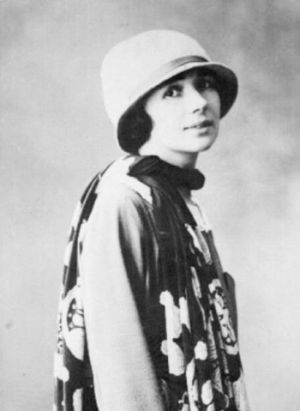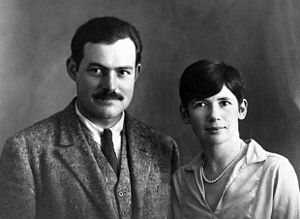After writing yesterday’s blog, I went out for a walk, and found myself at the bookstore. I spent a leisurely hour wandering around, latte in hand, perusing the different sections. I thumbed through a couple of Hemingway books, such as “The Sun Also Rises” and “A Moveable Feast“. There are so many books about Paris, which is a place I would love to go to–and the closest I can get is through films and books, and the soundtrack to “Amelie” I listen to on YouTube. There seems to be a surge of interest in the icons and characters of the 1920′s; I wonder if the imminent release of Baz Luhrmann‘s “The Great Gatsby” is responsible for the renewed focus. But I’m not complaining, I adore this era–the style, the decadence the tragedy, the romance. Which is why I thought I would love “The Paris Wife”.

One reader comment urged me onward, towards the end of “The Paris Wife”. My husband worked late last night, and so I tucked up on the couch with a glass of wine and invested my attention into the story (then the poor fellah came home after a twelve hour shift and I’m like: “I’m sort of drunk and really into this book…just how important is dinner to you?”). Later, once in bed, Ben dozed while I finished the novel by lamplight. Talk about a slow burn–this book practically bursts into flames when the agonizing demise of a marriage is explored. Hemingway, that cheeky ole sod, really thought he had pulled a fast one on first wife Hadley Richardson. “Why not bring a friend along on our holiday? So you have company when I get all moody and writer-y…might as well bring the one I am also sleeping with”. And then his poor wife is stuck hanging out at the beach all day with Pauline Pfeiffer, the ‘other woman’. Pauline is sweet and kind, and then helps herself to some Hemingway whenever she says she is taking a shower or having nap. Meanwhile Hadley is busy digging the deepest hole in which to bury her head.
(Pauline, striking a pose).

There is a moment in the book where Hadley notices that there are “three of everything” in the hotel, bathrobes, breakfast trays, bathing suits on the line. She then notices their three bicycles outside precariously leaning, as it ready to topple over like dominoes–as it would in this accidental love triangle. The boundaries were becoming so blurred, this strange union happened in such a seemingly organic fashion, the way plants creep closer together in the sunlight. And then there were three, and nothing would ever be the same again. This is the moment where I lowered the book and pondered that image. It’s like—you couldn’t make this stuff up, write it as fiction, because no one ever would believe it could really happen–but here it is, a historical fact that this situation with Ernest Hemingway was the basis for the beloved sitcom “Three’s Company”. Come and knock on our door indeed.

Hadley Richardson is slowly dying inside while Hemingway is having his cake and eating it too. There is a moment in the book when they are laying down for an afternoon siesta, and Pauline sneaks in to the room, and has sex with Hemingway, as Hadley just pretends to sleep. The mind reels, the gall of those two. Hadley was a bit weak and unassertive, but she really should have rolled over and said: “You know what I’d love…I’d love it if you could just dismount my husband…cause this is just in bad taste”. But she knew that she was losing, but she wasn’t ready to admit defeat. What remained of her marriage was a handful of sand in her fist–until she could open up her hand and let it blow off her palm, she simply had to let each grain slip through her fingers.
(Hadley on her wedding day, no idea what the future holds).

Ultimately ole Hemi suggests that they all go live with Pauline’s family in America. Hadley says that the three of them can’t all just live together, to which her husband shrugs: “we already do live together”. Oh no he didn’t! Yes, dear readers, he did. Maybe he just thought they could live like that forever, everyone steeped in denial and Hemingway knee deep in lady business. Maybe if he played his cards right, maybe he could swing a wee three way– who knows what the man was plotting? When Hadley finally confronted the obvious situation, he struggled with the age old: “Oh, woe is me, I’m in love with two women, and I’ve really enjoyed the convenience of everyone living in the same house… how ever shall I choose?” Of course he will go for the newer, younger model, because when given the choice, any one would take the upgrade. It’s like with “Three’s Company”, if Jack Tripper had to, he would choose blonde and busty Chrissy over boring brunette Janet. That’s just how it is ladies, and we have Ernest Hemingway to thank for that. (That and the “Old Man of the Sea“, which was really quite good).
Hadley makes the decision easy for him–she opens her hand, and lets the sand go, and proclaims that if he can be apart from his lover for 100 days, and is still in love after that time, then she would grant the divorce. But the saddest part is that in Pauline’s absence, Hemingway spends time with Hadley, sharing meals and a bed. Argh, and it’s so painful, because there is a friendship there that can’t be broken despite the fact that he is going to leave her for another woman. So she enjoyed his company for as long as she could: “just to be at the same table” with him one more time.
Hemingway would marry Pauline, and marry twice more after that, with many lovers in between. The book ends with an epilogue of Hadley in 1961, long since married to another man. She and Hemingway speak for the last time, shortly before he committed suicide. He expresses regret, but both express gratitude for the era in Paris when they were young and their love was pure. They had the “best of each other” before the well had been poisoned. And there is not one particular person or thing to muddied the waters; those were some crazy, definition bending times, and free love comes with a hefty price. They left the conversation knowing what they had was good, that they were once happy together. Hadley says that the strength she gained from knowing Hemingway, was the strength she needed to survive loving him. She was grateful that he was once hers to lose, and that there was a time before the walls crumbled, that they both slept under the same roof.
(Hemingway and Pauline, a wedding portrait)


Pingback: Melanie searches for her bliss | Read it to absorb my awesomeness
Kinda like an olden day version of Chris Brown, Riri, and Karouche …